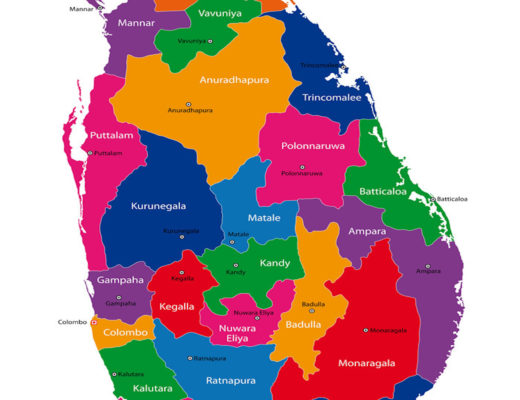The Kandy Esala Perahera , which takes place in the hill country of Kandy, Sri Lanka during July/August annually, is one of the supreme historical and cultural events in the whole of Southeast Asia. It is believed to be to commemorate the inceptive discourse delivered by the Buddha since attaining enlightenment or Buddhahood.
Prior to the commencement of the procession, which last for ten days, the temple astrologer – known as the Nekath Mohottala, has to announce the auspicious days to the Lay Custodian (Diyawadana Nilame) of the temple.
The procession itself consists of a spectacle of drummers and the dancers, novelty being the Savarang dancers by the young give an assurance and a pledging to safeguard the continuance of the age-old traditions of the event.

Another spectacle of the pagent is to see the Temple Custodian of Tooth Relic in ceremonial dress, depicting the old traditional Kandyan costumes. The Perahera is accompanied by a vast number of caparisoned tuskers and elephants that parade the streets of Kandy in celebration of this religious event. After a week of festivities, the Relic is taken out and paraded throughout the streets of Kandy city, which is also decorated. ‘The casket containing the Relic is taken out on an ornamental chariot to which is yoked a caparisoned elephant. Members of the Sangha walk in front of the chariot, each holding pirith nool (strings of protection) tied to the chariot and chanting Paritta (Pirith)’.
The proud and majestic Maligawa Tusker walks on pavada to prevent its feet tread on unsoiled while carrying the golden casket of the Buddha Relic.
This historical is celebrated to honour the Sacred Tooth Relic and the four guardian Gods – Natha, Vishnu, Kataragama and Goddess Paththini. The month of Esala has been chosen to commemorate the birth of Vishnu.
The Tooth Relic
The Buddha attained Parinirvana in 543 BC. His body was cremated in a Sandalwood pyre in Kushinagar. Khema Thero, retrieved the Buddha’s left canine tooth and handed it over to King Brahmadatte, the ruling king of Kalinga Guhasiva, his successor an ardent Jain, with the knowledge of importance of the Relic, converted himself to Buddhism and began to worship the Relic in the belief that the Tooth Relic had a divine blessing.

Legend continues that after the invasion of Kalinga by the sons and relatives of Kheeradhara Narendra, King Guhasiva asked his daughter Hemamala and son-in-law Dantakumara to carry the Sacred Relic and hand over to King Mahasena of Sri Lanka for safety. The Prince and the Princess donned the garb of ascetics and carried the Relic hidden within the coiffure of Hemamala . Thus, the Buddha’s Tooth Relic came to Sri Lanka after eight centuries from India.
In Sri Lanka
Ever since, every succeeding ruler bestowed all honours and offered Sri Lanka to the Buddha once again so that entire countrymen would pay homage and pay respect to the Sacred Tooth Relic. Every time the capital of Sri Lanka shifted from Anuradhapura to Polonnaruwa, Dambadeniya, Yapahuwa, Kotte, the Tooth Relic too be shifted until the Relic was rested at the Dalada Maligawa in Kandy.
The Kandyan Kingdom fell to the British in 1815, the custody of the Tooth Relic was handed over to the Buddhist Clergy. In the absence of the King, a lay custodian called the Diyawadana Nilame was appointed to handle all routine and administrative matters.
The purpose of the Kandy Esala Perahera is to beseech urgent blessings of the Gods to obtain rain for the cultivation of crops and to enrich the land.
In 1592, King Vimaladharamsuriya defected the Portuguese after a decisive battle and made Kandy as the political capital. Later, the King brought the Tooth Relic to Kandy and constructed super exquisitely beautiful temple in the neighbourhood of the royal palace.
Organisation

To organize such a vast and ritualistic pageant and a festival of this nature, it needs intricate planning months ahead, as it involves the cooperation and dedication of the staff and the finances, become the concern of the administrators of the temple.
Also, the organisers of the pageant and their representatives have to contact the owners of elephants in seeking their support and negotiate hiring charges for elephants.
The estimated cost to perform this pageant is believed to be around two million rupees. In such a backdrop, many artistes are believed to often work sleepless nights, under any shade, and forsake meals due to the poor daily wages they get for their contribution. Most of the artistes who take part in the pageant, as Prof. Anuruddha Seneviratne, in his booklet on The Kandy Esala Perahera (ISBN 973-965-665-017-4 – Vijithayapa.com) summarizes how these artistes endure such conditions in the city for two weeks until the Perahera is over and spend their daily wages on food and go home empty handed purely because of their devotion.
Sri Lankan old chronicles indicate how this ritual was held in the 3rd century BC on the mountains to appease the rain god. This practice has continued in the succeeding centuries along with the Buddhist worship.
However, it is said that even gods turn a blind eye to any pleading should the ruler of any nation fail in his moral and legal obligations to care for his subjects when the suffering of masses is allowed to continue, whilst the rulers and politicians become egocentric and self-absorbed, and the masses undergo their suffering, misery and pain.
In certain political circles in this land, there is a strong belief that the recent severe droughts, floods and earth-slips and numerous other calamities that have befallen on this Dharma Deepa is nothing but a pure By Dr. Tilak S. Fernando
Part references: Prof. Anuruddha Seneviratne’s Kandy Esala Perahera.
 credit: Ceylon Today Newspaper & Ceylon fat.image.com
credit: Ceylon Today Newspaper & Ceylon fat.image.com





